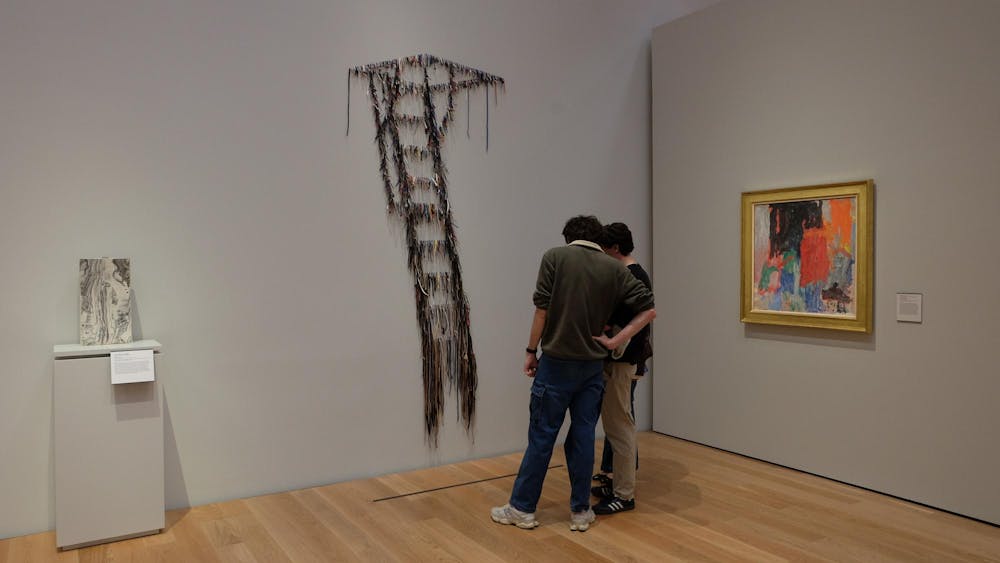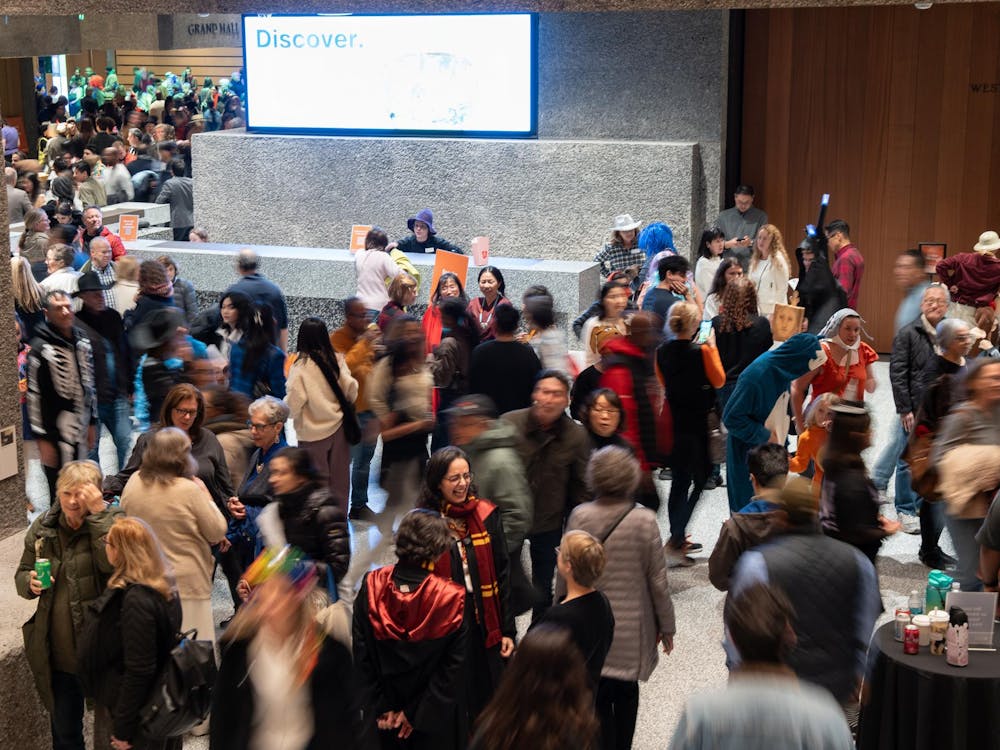In no other room than the “Princeton Collects” exhibition could a punch bowl from China’s Qing Dynasty, a skirt from the Democratic Republic of the Congo, and a Willem de Kooning oil painting sit so close to one other. The exhibition — borderless, eclectic, and cross-temporal — is located in the southeast pavilion of the new art museum, one of two main temporary exhibition spaces.
“Princeton Collects” celebrates more than 2,000 works donated to the museum by more than 200 members of the Princeton community between 2021 and 2025. Around 150 works are on view in this inaugural exhibition. From abstract Expressionist canvases to 19th-century British portraiture and Chinese earthenware, “it is … impossible to impose on such sprawling gifts a single organizing principle,” the pavilion description reads.
At first glance, the effect can be dizzying. The high-ceilinged room, combined with the lack of a cohesive theme or motif, struggles to orient the visitor as they enter. Immediately after a towering wall featuring donors’ names, sculptures of all sizes stand at the center, with photographs of tattoos and oil paintings housed in frames big and small on the wall behind. Everything and nothing draws your attention.
The further you venture inside, the more messy the pavilion appears. Ai Weiwei’s “Porcelain Cube” (2009), an ornate three-dimensional ceramic cube, sits in the center of a collection of oil paintings. Nari Ward’s “Scape” (2012), a shredded fabric ladder, stands just around the corner from the cube. At every turn, you are hit with an amalgamation of diverse artistic media — fabric, ceramic, painting, and photography — that at times feel overwhelming and excessive.
Even the positioning of certain objects — for example, a Qing-era Punch bowl sitting below an etching and engraving depicting William Hogarth’s “The Gate of Calais or The Roast Beef of Old England” (1748–49) — can seem almost arbitrarily placed with no concern for visual or historical continuity.
Upon closer inspection, however, viewers will see a deeper artistic connection between the two works.
As the punch bowl’s didactic reveals, the Chinese pottery showcases a reinterpretation of Hogarth’s painting. The two works, in effect, embody the circulation of ideas and aesthetics along trade routes that connected two very different worlds.
In these ways, moments of cohesion emerge from the exhibition’s apparent chaos as artworks reveal unexpected continuities across such an eclectic collection. Connections are made between seemingly disparate artworks, helping the viewer make sense of the visual commotion that permeates the pavilion.
For all its eclecticism, visitors enjoyed the diverse works of art showcased in the pavilion.
“I like that the colors don’t match,” said Elizabeth Watson of Ewing, N.J. “The pieces go together, but it’s because somebody had a wonderfully fun time figuring out what goes with something else — I think that adds to the visual intrigue.”
Amid the visual noise of the space, anchoring the exhibition is Irish artist Sean Scully’s “Night and Day” (2012), a massive painting of white, gray, and milky rectangles. Around it, tigers on ancient papyrus, porcelain deities, and oil landscapes draw viewers into fleeting visual affinities rather than clear narratives. Meanwhile, the set of Asian scrolls adjacent to Scully’s painting features works from 1761, the mid-1800s, and 2006, spanning Japan and China. These unexpected dialogues between time and geography lend credence to the pavilion’s description of a “museum in miniature.”
“The collection is so big, and the way the materials are presented just keeps me interested,” Watson said. “Just keeps me looking, and looking, and looking, and exclaiming.”

Still, “Princeton Collects” occasionally feels less cohesive than other pavilions in the museum; in some ways, its lack of a unifying artistic theme feels foreign within the broader museum, where pavilions are mainly grouped by geography.
While the exhibition succeeds as a study in contrast and cross-cultural influences, its spatial isolation raises questions about curatorial strategy. The thematic looseness — though deliberate — can leave visitors unsure of where to look or how to linger. The exhibition seems noticeably quieter than its neighboring collections, with viewers drifting in and out in a matter of minutes.
The spirit of the exhibition, however, is a fitting debut for the new museum, inviting viewers to reconsider how art travels, adapts, and accrues meaning across time and culture.
“Princeton Collects” mirrors the museum’s own moment of renewal, using the renovated architecture and non-hierarchical organization to invite visitors to think about connections between eras, materials, and makers.
The pavilion’s simple layout, coupled with lots of open space, makes the pavilion easily re-purposable for future temporary exhibitions. But the current exhibition fails to bring together the space.
Sena Chang is a senior News writer for the ‘Prince.’ She typically covers campus and community activism, the state of higher education, and alumni news.
Please send any corrections to corrections[at]dailyprincetonian.com.








